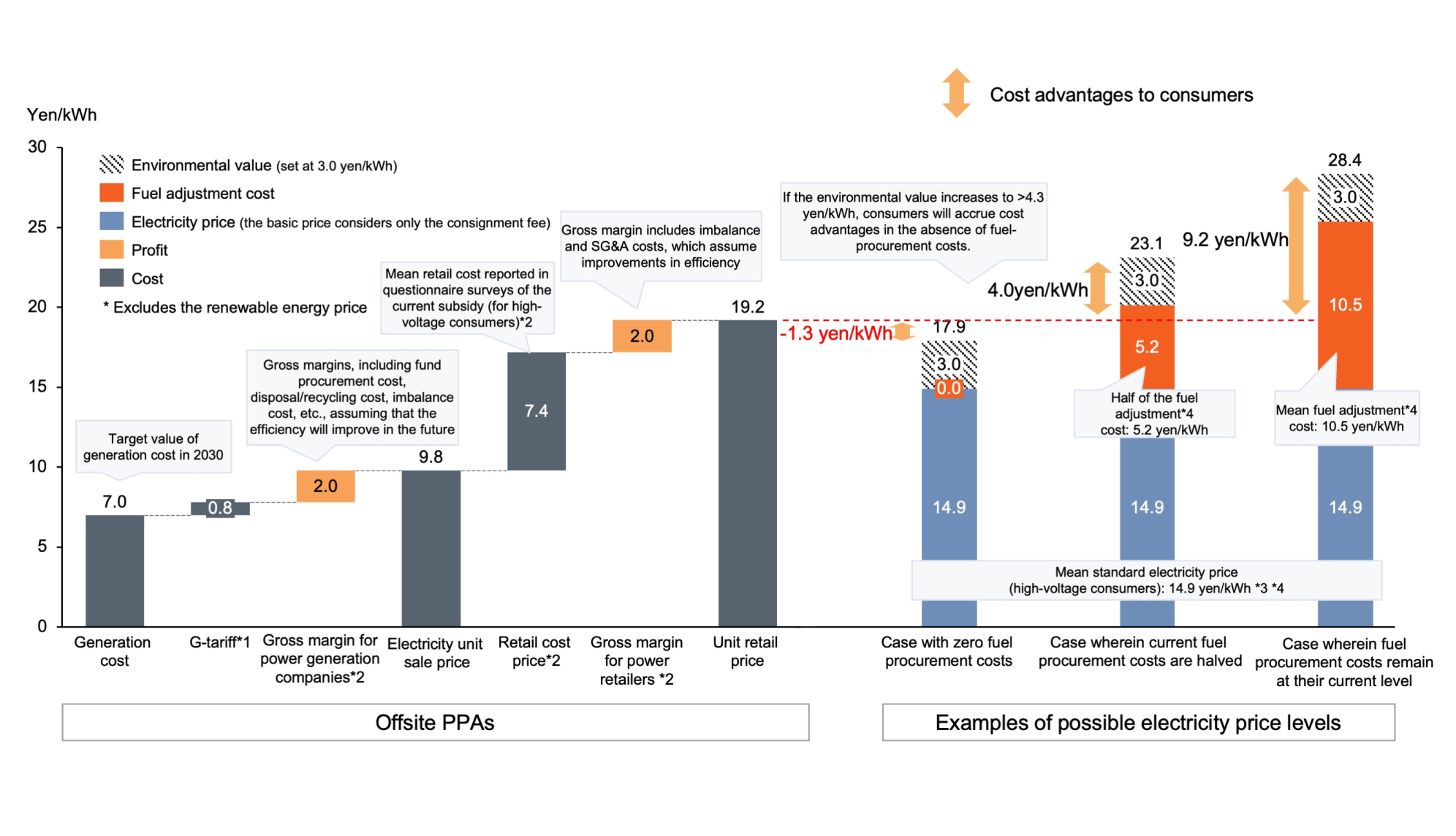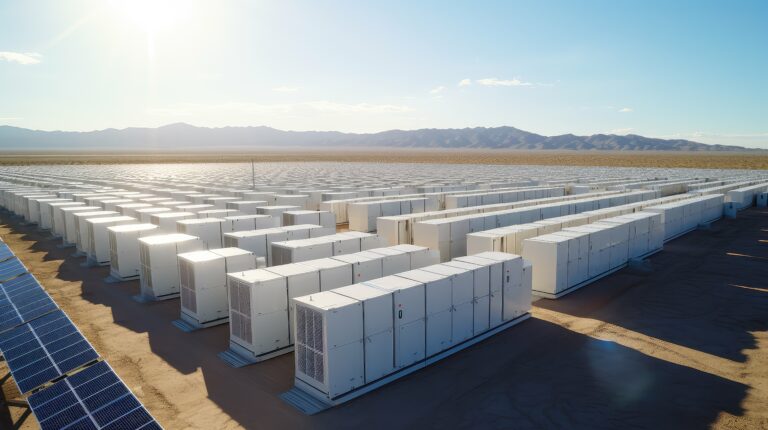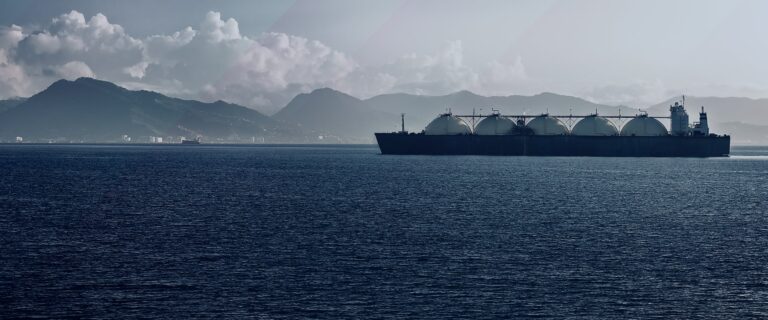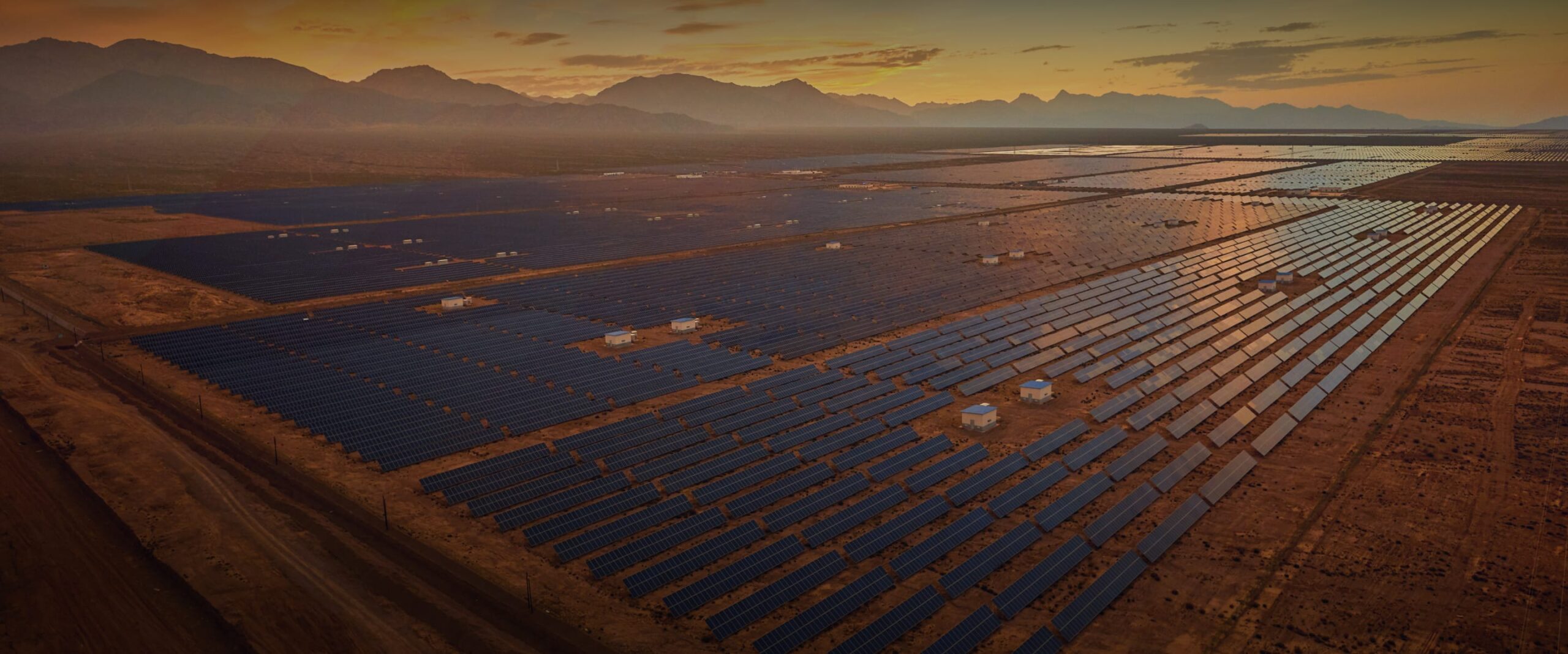
Survey on Solar Offsite PPAs in Japan
Commissioned by the Japan Photovoltaic Energy Association, EPI has conducted a survey of PPAs, identifying related cost structures and benefits for end users. EPI has also proposed policies to promote offsite PPAs.
Executive summary
- Commissioned by the Japan Photovoltaic Energy Association (JPEA), EPI has analyzed offsite power-purchase agreements (PPAs) for solar power generation (including cost structure, form of contract, electricity sales prices, and the effects of subsidies).
- The results suggest that subsidies would bring cost advantages to all entities in the value chain (power generation companies, power retailers, and consumers). The sharp rise in fuel procurement cost in 2023 is another important factor.
- The “Offsite PPA” scheme allows the introduction of solar power under a consumer-led model independently of a feed-in tariff (FIT) system. At present, offsite PPAs require subsidies to ensure their economic viability. As costs continue to fall while environmental value continues to rise, such schemes are expected to be adopted independently on a wide scale in the absence of subsidies.
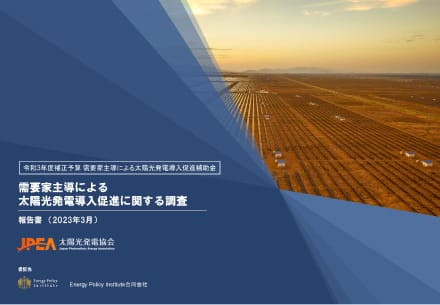
Introduction
In Japan, where the introduction of renewable energy is constrained due to limited available land at the consumers’ sites, offsite PPAs enable consumer-led introduction of renewable energy by consumers. Since this scheme allows power generation companies to fix the sale prices of electricity from non-FIT sources over a long term, power retailers can procure renewable energy at fixed prices over a long term and consumers can purchase renewable energy at lower prices than standard electricity charges. Thus, the widespread adoption of PPA schemes is economically logical.
To encourage the wider adoption of offsite PPAs, the Ministry of Economy, Trade, and Industry (METI) implemented a subsidy called the “Consumer-Led Solar Power Generation Introduction Subsidy” in 2022. As part of these developments and commissioned by the Japan Photovoltaic Energy Association (JPEA), EPI has analyzed the cost structure of offsite PPAs for solar power from 2023 onwards, clarifying the profits and impact of subsidies in each value chain.
Breakdown of solar-power generation costs and trends in Japan
The solar-power generation costs analyzed by EPI are shown in Figure 1. The generation cost of solar power from high-voltage ground-mounted solar panels in Japan was 13.1 yen/kWh *1 for power plants which commenced operation in 2020, falling to 11.0 yen/kWh in 2023. This decline (of 2.1 yen/kWh over two years) corresponds to an annual cost-reduction rate of 5.7%, primarily due to decreasing installation and construction costs. To further reduce the generation cost to 7.0 yen/kWH (which is Japan’s target for 2030), the annual cost-reduction rate must increase to 6.2% per year.
Figure 1 Verifying cost-reduction targets*²
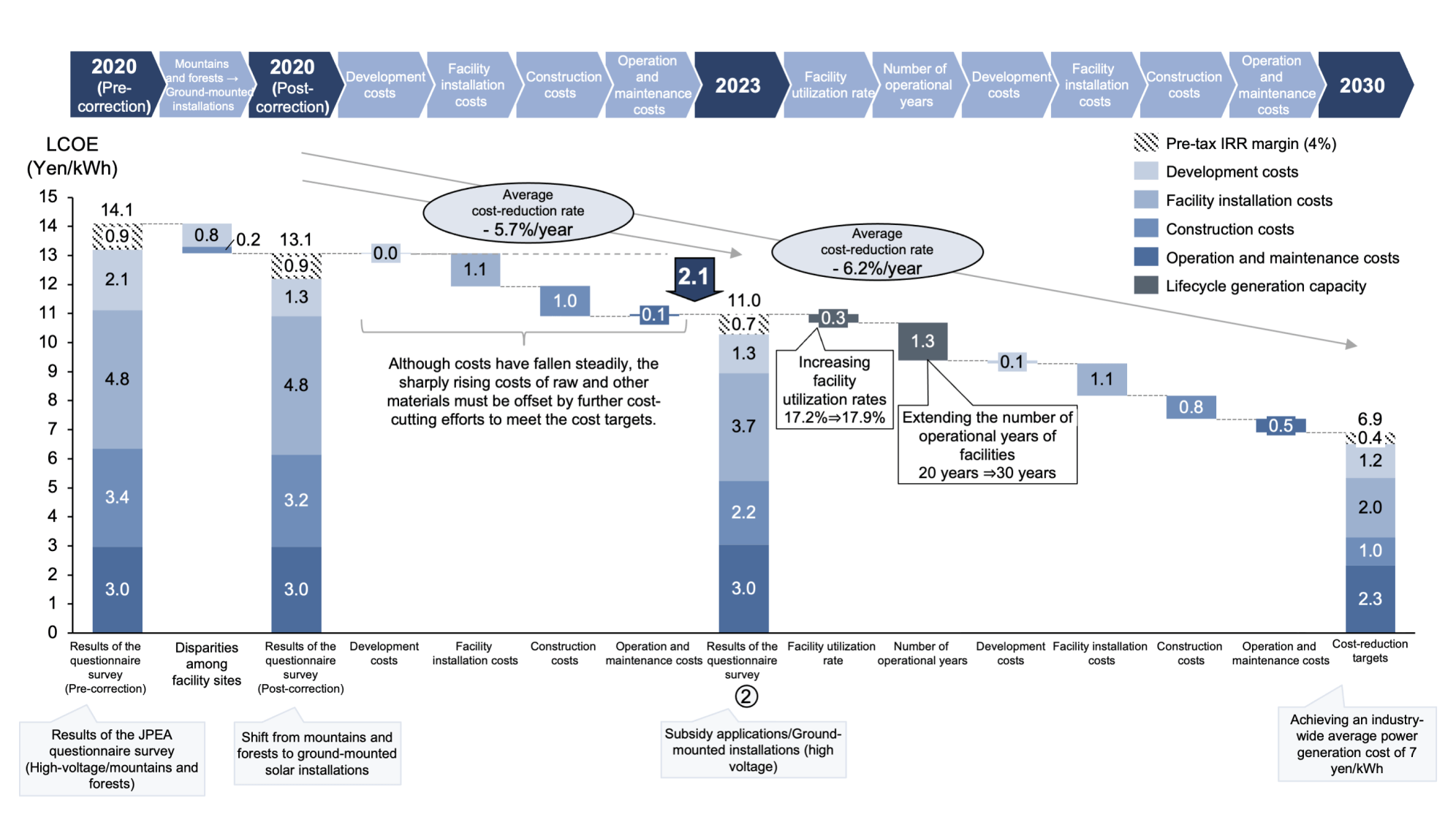
Profitability of offsite solar PPAs
Figure 2 shows the profitability analysis results for power generation companies, power retailers, and consumers when implementing offsite solar PPA schemes, as analyzed by EPI. The cost of high-voltage solar generated power is 10.5 yen/kWh, which reduces from 3.5 yen/kWh to 7.0 yen/kWh after subsidy implementation. The electricity price sold to power retailers from power generation companies is 10.9 yen/kWh, wherein power generation companies secure a margin of 3.9 yen/kWh.
Meanwhile, the unit retail price (of power sold by power retailers to consumers) is 21.6 yen/kWh. After deducting the unit generation price of 10.9 yen/kWh, transmission loss of 0.4 yen/kWh, generation imbalance of 1.0 yen/kWh, and wheeling charge of 5.9 yen/kWh, the margin for power retailers is 3.4 yen/kWh. EPI estimated the generation imbalance from questionnaire surveys and interview responses.
The standard electricity price offered by former regulated electricity utilities was 25.5 yen/kWh. With a unit retail price of 21.6 yen/kWh, offsite solar PPAs offer a cost advantage of 3.9 yen/kWh to consumers.
These results indicate that after implementing subsidies worth 3.5 yen/kWh, all entities (power generation companies, power retailers, and consumers) gain margins/cost advantages of 11.3 yen/kWh in total.
Figure 2: Profitability of offsite PPAs (average values of operations aimed at high-voltage consumers among all clients adopting this subsidy)
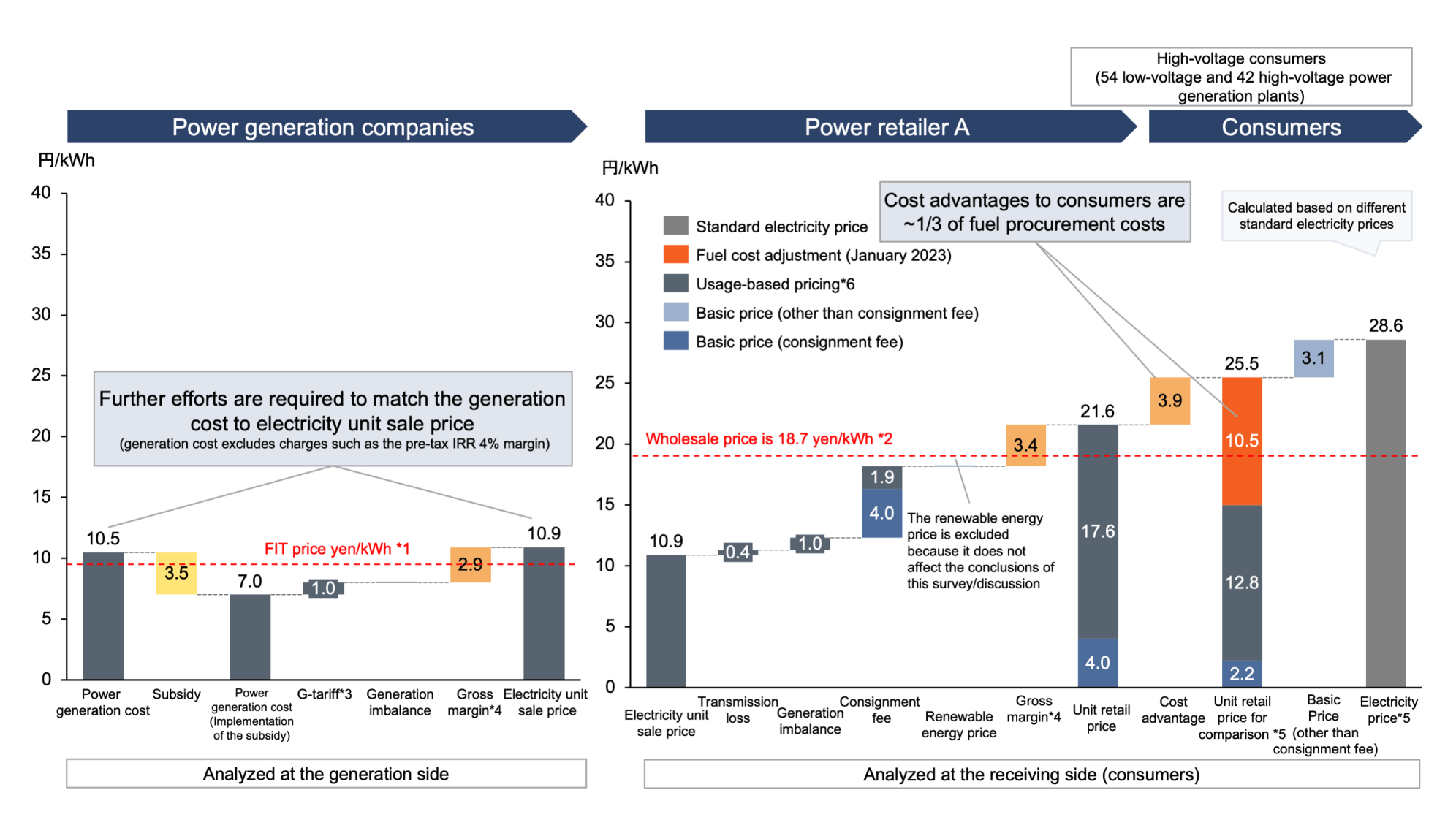
Potential for the widespread adoption of offsite solar PPAs
As indicated here, offsite solar PPAs can guarantee economic viability when subsidies are implemented. When costs further decline, offsite PPAs are expected to be adopted independently of subsidies on a wider scale. In this survey, EPI has determined the likely electricity costs under offsite solar PPAs in 2030 (Figure 3).
First, EPI assumes that the target cost of solar power (7.0 yen/kWh; set by the Government of Japan) will be met through steady reductions in solar-power generation costs. Assuming that margins for power generation companies and power retailers will reduce to 2.0 yen after optimizing offsite PPA operations, the unit retail price of offshore PPAs should reach 19.2 yen/kWh.
Meanwhile, EPI assumes that the current electricity pricing system (as of January 2023, the survey period) will remain unchanged, with no inflation. Therefore, if the environmental value rises to 4.3 yen/kWh or higher, electricity costs under offsite solar PPAs will become cheaper than standard electricity prices even if fuel adjustment cost fall to 0 yen/kWh (a hypothetical scenario), encouraging the widespread adoption of offsite PPAs even in the absence of subsidies.
The above analysis suggests that although subsidies will promote the adoption of current offsite PPAs, widespread adoption (independently of subsidies) can be anticipated if the costs continue to decline while the environmental value rises.
Figure 3 Cost advantages to consumers (high-voltage: visualization of the projected scenario in 2030)
